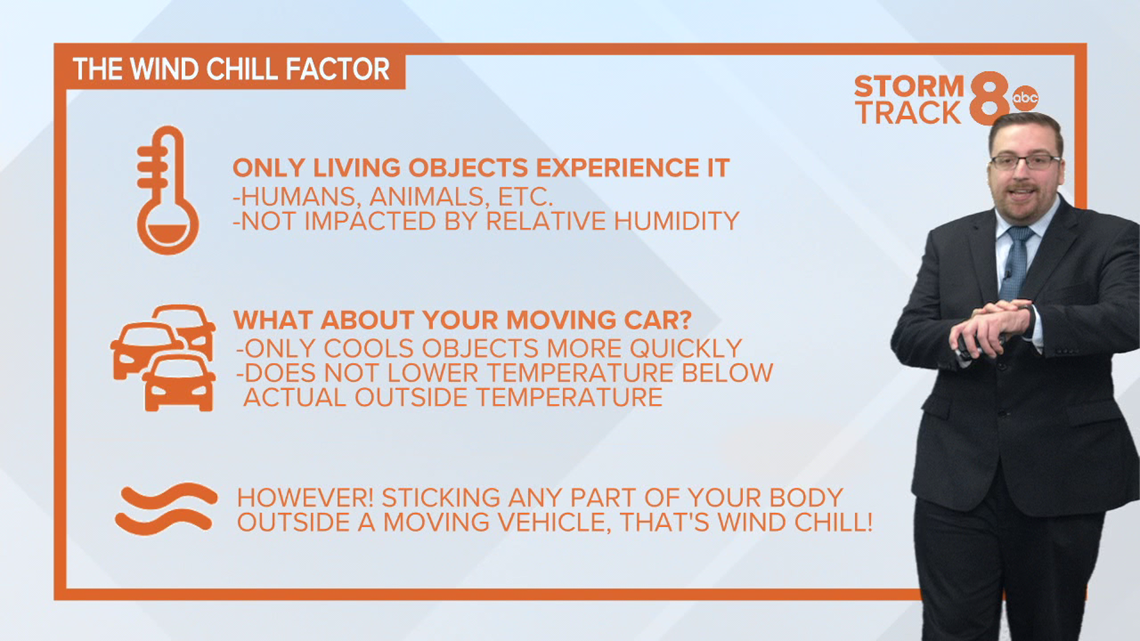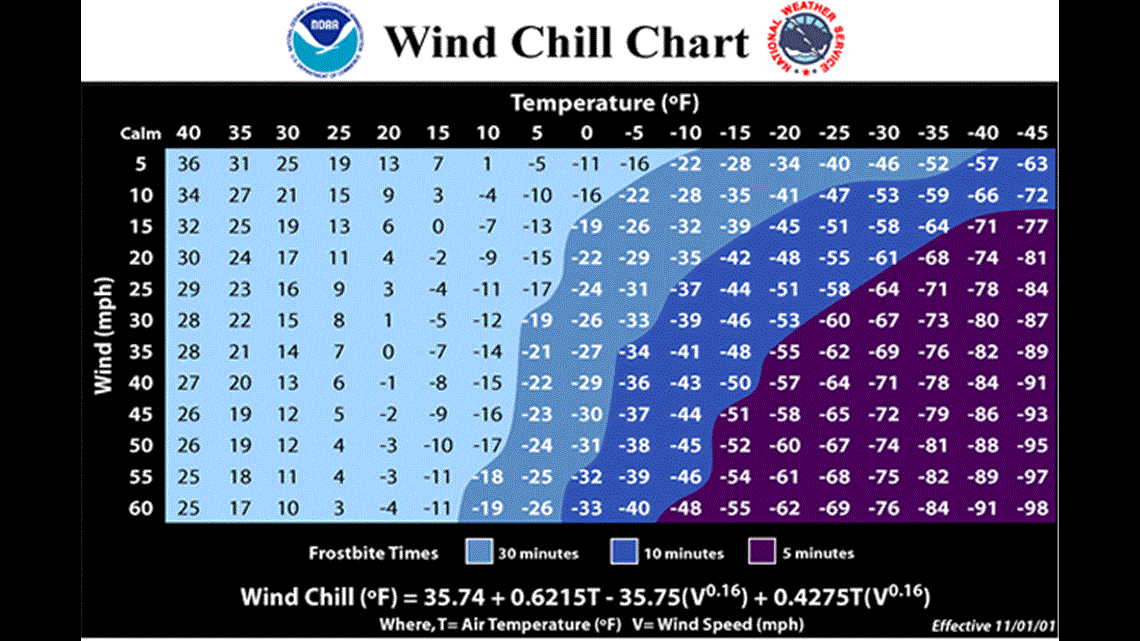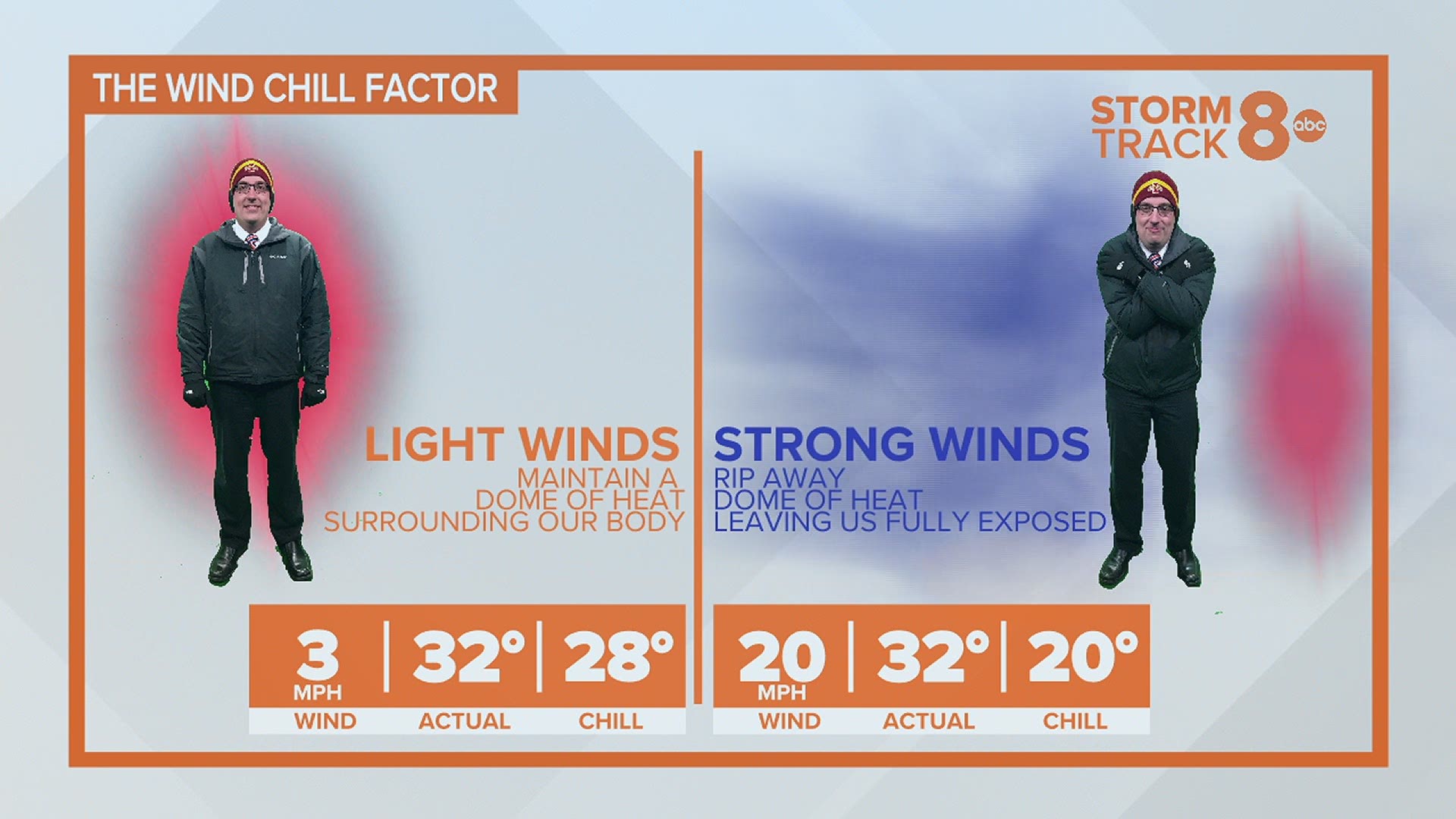We've reached that time of year when the wind is our enemy, in terms of being comfortable outside. On days with relatively no wind, or light winds with a good amount of sun, we are fairly comfortable with just a winter jacket on. However, increase the wind speeds and we're racing to find as many layers as possible, including hats and gloves. Why is that? The temperature may be the same in both cases, but the wind puts that extra bite on the air that we refer to as the wind chill.
Our body acts like a radiator, emitting heat constantly. If we're moving, we're emitting even more heat. In conditions where light winds are present, there's a dome that forms around us from that heat escaping our body. This keeps us relatively comfortable.
Crank the winds up and that warm dome gets swept away, literally. This leaves us exposed and feeling like the temperature is actually much colder when in reality the temperature hasn't changed at all.


The wind chill only impacts living objects, such as humans and animals. It does not impact stationary objects, like cars and other items you would find outdoors. For example, you might wash your car at a temperature of 35-degrees and wonder why the water doesn't freeze as soon as you hit the road. The reason? We are not changing the temperature and water has no relative feeling. To water, wind makes no difference in whether it freezes or remains liquid.
One thing it will change is the rate of cooling. The radiator in your vehicle will cool at a much faster rate with wind involved. It will still cool to the same temperature, however.
While animals with a healthy fur coat are not nearly as vulnerable as we are when it comes to wind chill, it's still important to make sure that we are taking steps to protect them. Limit the amount of time spent outside on those really cold days and make sure your furry friend always has fresh unfrozen water.


Frostbite times can vary depending on the severity of the wind chill, but generally speaking, 30 minutes or less is a good rule when the wind chill drops to near freezing.

